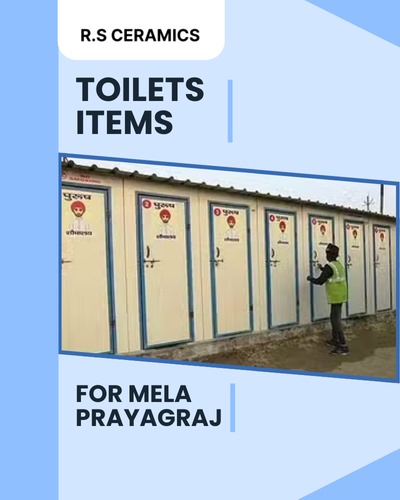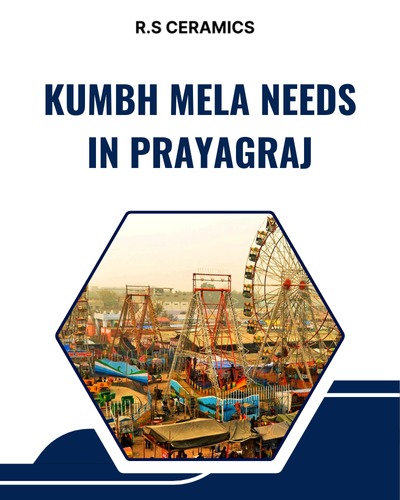The Kumbh Waste Management Prayagraj is worth remembering due to the millions that are drawn to the holy city of Prayagraj in India. Every decade, the city becomes a focal point for devotees for a holy bath at the meeting point of the Ganga, Yamuna, and Saraswati rivers. However, when an event of such a scale occurs, some problems arise, especially those related to the accumulation of waste. This paper addresses the different methods and efforts that have been utilized to achieve effective Kumbh waste management Prayagraj on such a massive scale.
An Environmental Hazard: Kumbh Waste Management Prayagraj
The Kumbh Mela is an event where crowds of up to 150 million people will be welcoming all in attendance over nearly two months. A great number of visitors means a great generation of waste most of which will be *plastic, food waste, paper, organic waste, etc. Such enormous garbage can be a threat to the environment and health of a city, with serious river ecosystem areas, in the absence of any management and planning. So, Kumbh Waste Management Prayagraj is another activity that will help both in achieving the aims of the event.
Modern Waste Management Techniques
Besides the traditional approaches, additional technologies and practices were introduced to improve waste management during the Kumbh Mela:
1. Adoption of Biodegradable Products
In a move to reduce plastic accumulation, the government recommended the use of biodegradable substances. Vendors were advised to use biodegradable plates and cups made from natural materials such as banana leaves or areca nut sheaths to serve food. The transition from single-use plastics to eco-friendly alternatives was instrumental in mitigating non-biodegradable waste.
2. Smart Toilet installation
The public toilet facility for Kumbh was yet another achievement of Kumbh waste management Prayagraj. For the many visitors, over 1.2 lakh portable toilets were installed on the Mela grounds. Such toilets had many sensors fitted which enabled monitoring of usage as well as the cleanliness level of the toilets, thus making sure that the maintenance was done when required and minimizing the sanitation problems. This innovative way of managing the waste from the toilets also ensured that pollution from the toilets was minimized.
3. Public Awareness Campaigns
The education of the public was a very important factor in the success of Kumbh Waste Management Prayagraj. The concerned authorities implemented a broad range of awareness campaigns targeting the pilgrims to promote waste segregation and disposal. Pamphlets were handed out, posters were pasted, and loudspeakers were used to transmit the message. By embracing the community, the organizers were able to improve compliance and decrease littering.
The Role of Technology in the Integrated Waste Management
Technology is considered a major asset in enhancing the efficiency of Kumbh waste management Prayagraj. In order to provide real-time information to the residents of the area concerning waste collection, an app was created. Waste hotspots were monitored using drones for aerial surveillance which facilitated rapid response to waste hotspots.
GPS Equipped Waste Collection Vehicles
In order to facilitate welfare activities through waste collection, the authorities managed to fit garbage collection vehicles with GPS devices. That could assist in planning routes and schedules. Apart from making waste collection more effective, the strategy also reduced the volume of fuel used and scorched carbon making the Kumbha Mela more environmentally friendly.
2. Robotic Waste Sorting AutomationFurthermore, robots were deployed to sort waste more effectively at the processing facilities. Automating the process of sorting allowed occupants to sort large quantities of waste in a shorter time and this improved. The efficiency of Kumbh waste management Prayagraj.
What Went Right and What Could Be Done BetterThe success of Kumbh waste management?
Prayagraj has demonstrated what is possible with a well-programmed sanitary disposal system with a focus on when people are likely to dispose of a large quantity of waste. The event was not only capable of addressing the issues of waste production and disposal. But it also provided a model of how events can be organized with a sustainable perspective. The environmental cleanliness of the event was made possible due to the combination of all the preventive actions by the authorities, the technology, and support from the public.
Conclusion:
The efforts made in Kumbh Waste Management Prayagraj showcase the potential for sustainable waste management practices at large gatherings. By focusing on segregation, recycling, and the use of technology. The city of Prayagraj has set a precedent for other cities hosting large events. This model can be replicated in other parts of the world to ensure that large-scale events do not come at the cost of environmental degradation.
As the world moves towards a more sustainable future, the lessons learned from Kumbh Waste Management Prayagraj. Serve as a valuable example of how responsible waste management can be achieved even in the most challenging conditions. By adopting these practices, we can ensure that events of such magnitude leave behind not just memories but also a positive environmental impact.


